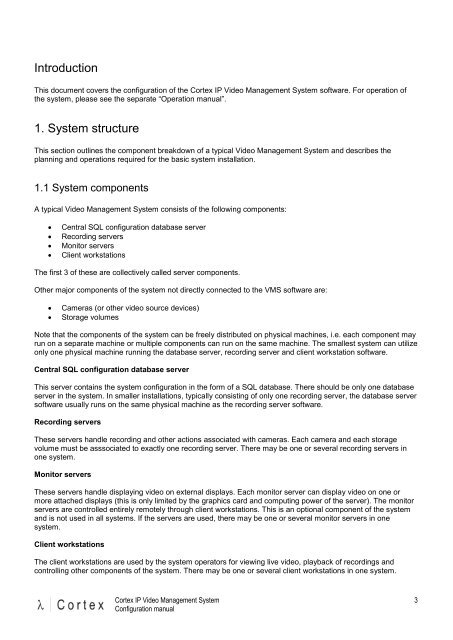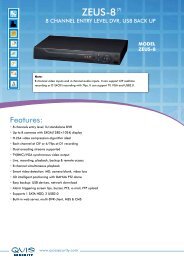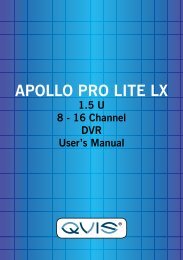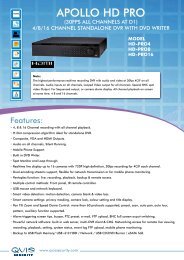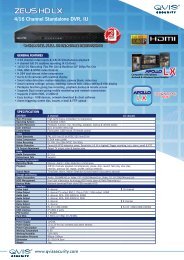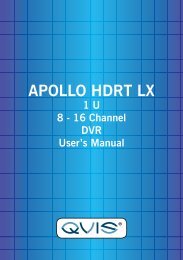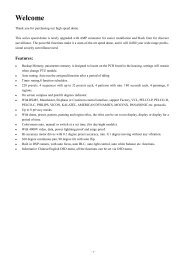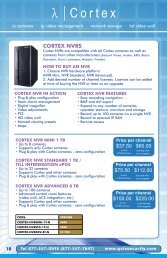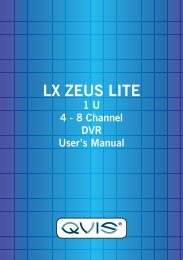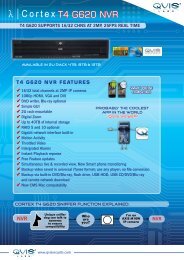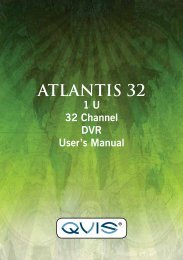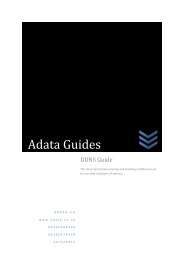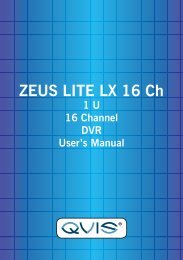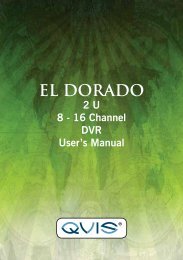CORTEX- VMS Configuration manual - Qvis Security
CORTEX- VMS Configuration manual - Qvis Security
CORTEX- VMS Configuration manual - Qvis Security
You also want an ePaper? Increase the reach of your titles
YUMPU automatically turns print PDFs into web optimized ePapers that Google loves.
Introduction<br />
This document covers the configuration of the Cortex IP Video Management System software. For operation of<br />
the system, please see the separate “Operation <strong>manual</strong>”.<br />
1. System structure<br />
This section outlines the component breakdown of a typical Video Management System and describes the<br />
planning and operations required for the basic system installation.<br />
1.1 System components<br />
A typical Video Management System consists of the following components:<br />
• Central SQL configuration database server<br />
• Recording servers<br />
• Monitor servers<br />
• Client workstations<br />
The first 3 of these are collectively called server components.<br />
Other major components of the system not directly connected to the <strong>VMS</strong> software are:<br />
• Cameras (or other video source devices)<br />
• Storage volumes<br />
Note that the components of the system can be freely distributed on physical machines, i.e. each component may<br />
run on a separate machine or multiple components can run on the same machine. The smallest system can utilize<br />
only one physical machine running the database server, recording server and client workstation software.<br />
Central SQL configuration database server<br />
This server contains the system configuration in the form of a SQL database. There should be only one database<br />
server in the system. In smaller installations, typically consisting of only one recording server, the database server<br />
software usually runs on the same physical machine as the recording server software.<br />
Recording servers<br />
These servers handle recording and other actions associated with cameras. Each camera and each storage<br />
volume must be asssociated to exactly one recording server. There may be one or several recording servers in<br />
one system.<br />
Monitor servers<br />
These servers handle displaying video on external displays. Each monitor server can display video on one or<br />
more attached displays (this is only limited by the graphics card and computing power of the server). The monitor<br />
servers are controlled entirely remotely through client workstations. This is an optional component of the system<br />
and is not used in all systems. If the servers are used, there may be one or several monitor servers in one<br />
system.<br />
Client workstations<br />
The client workstations are used by the system operators for viewing live video, playback of recordings and<br />
controlling other components of the system. There may be one or several client workstations in one system.<br />
Cortex IP Video Management System<br />
<strong>Configuration</strong> <strong>manual</strong><br />
3


